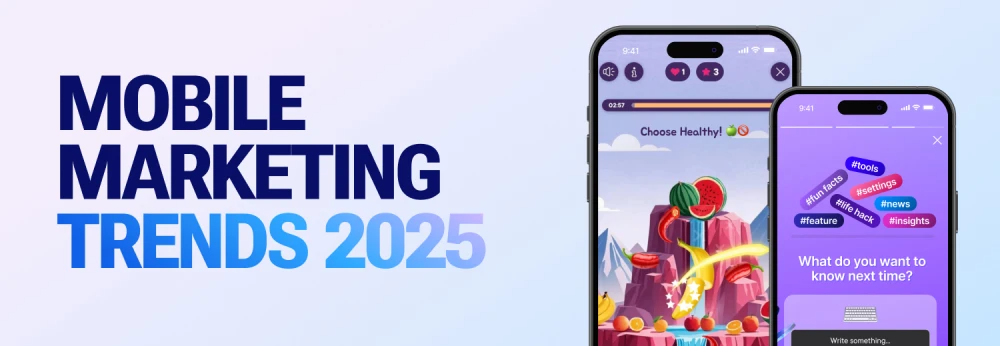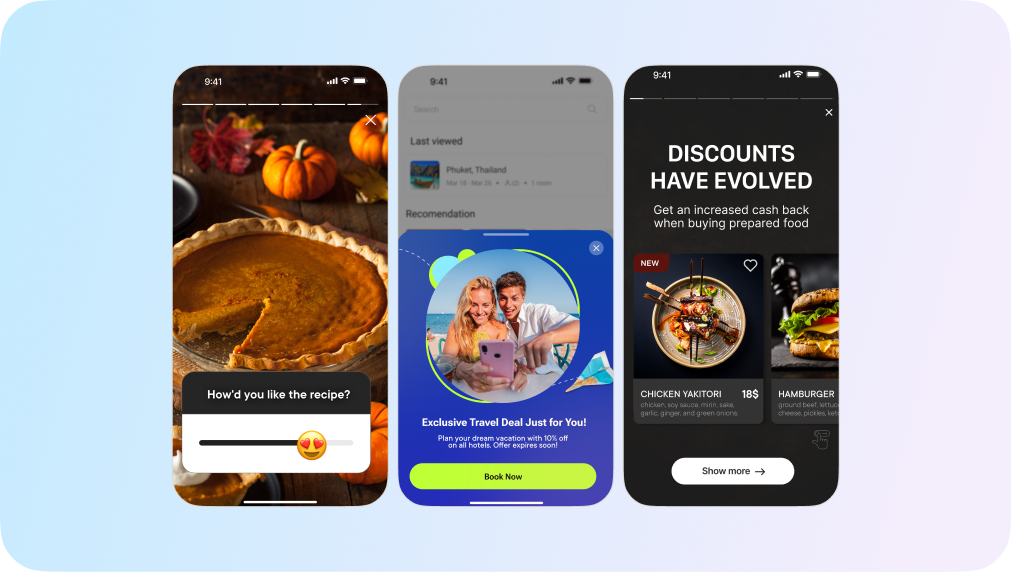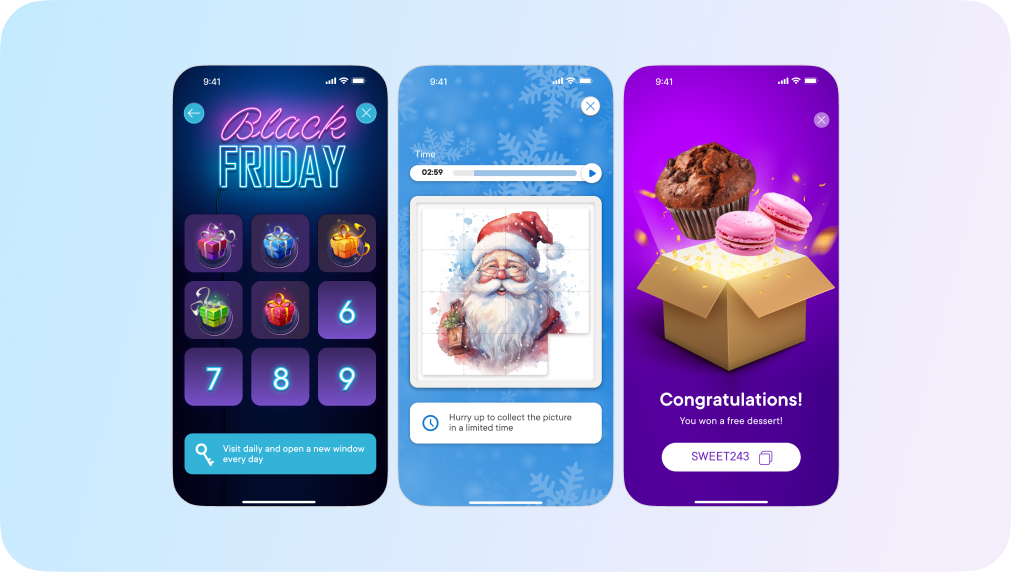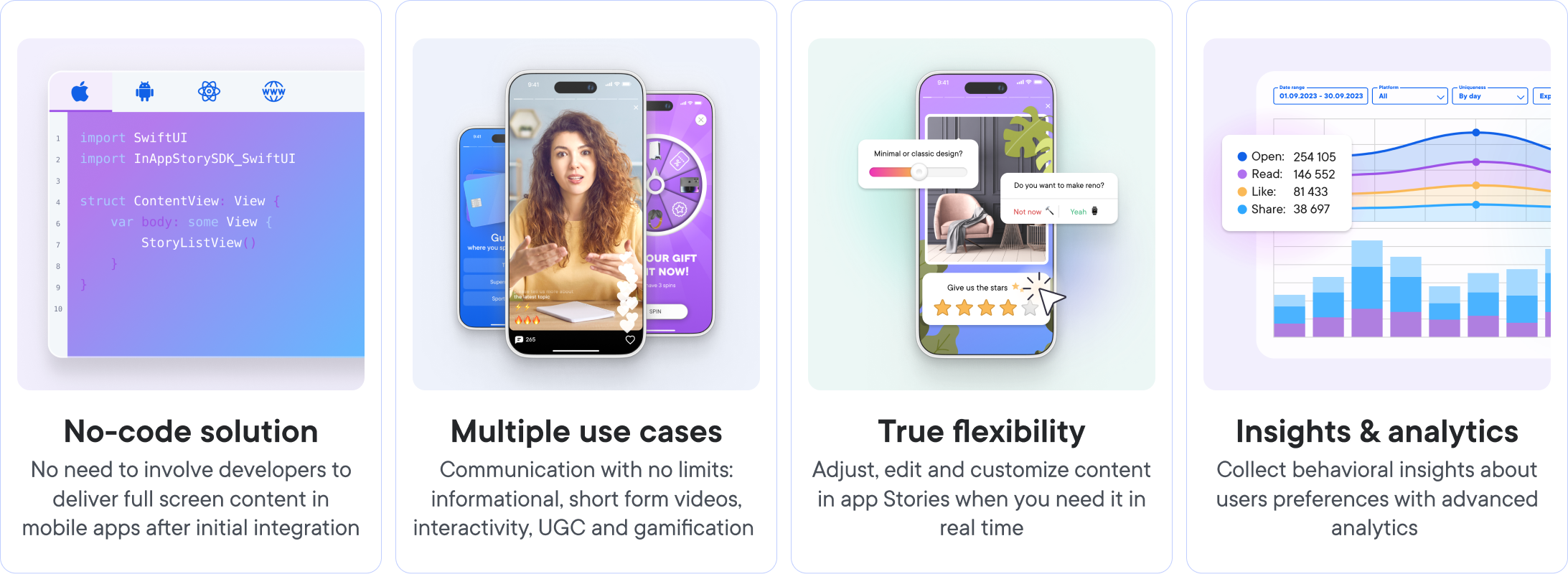
Digital Video Advertising Trends
Learn how video advertising is changing in 2025. Straightforward insights into formats, placement, and strategy that perform.
.webp?2025-12-17T15:00:29.367Z)
Spotify Wrapped ideas make stats lovable

Karina
Author @ InAppStory
What does meaningful mobile marketing look like in 2025? Every day, we’re juggling metrics (like CPI, CTR, CAC, LTV — yes, that whole alphabet soup) and trying to justify why the next grand campaign is worth the budget.
At InAppStory, we believe that the true value of mobile marketing lies in its ability to create genuine, lasting connections. As we continue to work alongside our clients, we're focused on what's next in creating meaningful, data-driven campaigns.
Keep reading to explore our mobile marketings trends, insights and predictions for 2025, and discover how you can position your team, app, and brand for continued growth and lasting impact.
Mobile marketing is a multi-channel promotional activity that targets smartphone, tablet, and other mobile device users. It encompasses a variety of tactics, including SMS, push notifications, in-app advertisements, mobile-optimized emails, and app-based marketing strategies.
According to an industry survey, mobile advertising spending in the U.S. is projected to reach $228.11 billion in 2025, accounting for approximately 66.4% of total digital ad spending in the country.
According to 2024 E-Commerce Report, brands that implement personalized, in-app content have observed an average 30% increase in user retention over 60 days. This effect is most pronounced in e-commerce and food-delivery applications, where purchase frequency can be influenced by real-time promotions and hyper-targeted content.
Historical Growth
Mobile marketing strategies have evolved significantly since the early 2000s when rudimentary text-message campaigns first became widespread. Modern tools, such as interactive app stories, gamification elements, and geo-targeted notifications, now allow for more nuanced and immediate customer engagement.
As of 2024, an estimated 89% of global businesses with an online presence have integrated at least one form of mobile marketing into their overall promotional framework.
Trend #1: The Super App Evolution
A super app bundles many services into one platform. You can chat, shop, and pay bills in a single place. That saves time and cuts down on app clutter. It’s no wonder more people are drawn to this all-in-one approach.
In 2025, super apps will continue to turn obstacles into fresh opportunities. Developers, marketers, and users will all work together. The call for all-in-one experiences will get louder. The need for smooth user journeys will become more pressing. Tools like AI and machine learning will help brands stand out.
The growth of super apps will be fuelled by some major reasons:
Gartner expects that by 2027, more than 50% of the global population will be daily active users of multiple super apps.
Okay, let’s talk about AI. We all know it’s everywhere. Every day, we’re hit with a new shiny tool that promises to “revolutionize” marketing. But does AI actually understand us? Does it get our customers, our brand’s voice, or even just how tired we are of the same old tricks? Spoiler alert: it can. But only if we use it right.
The integration of Artificial Intelligence (AI) into mobile marketing represents a paradigm shift in how businesses engage with their audience. The benefits are profound, ranging from enhanced personalization and improved targeting accuracy to cost reductions through automation and the ability to make real-time, data-driven decisions.
In 2025, we expect AI and machine learning in mobile marketing to reach a new level of maturity and sophistication. While 2024 was focused on demonstrating the potential of these technologies, 2025 will be the year of scaling them effectively.
90% of marketers say personalization makes businesses more profitable. Still,only 48% go beyond basic demographics (name, age, gender) understanding that there is so much more to personalization. Effective personalization understands that timing, context, and content alignment come first.
For instance, a travel app could integrate your past searches for family-friendly destinations to send a short, engaging in-app story about stress-free airport tips right before your flight.
Or a grocery-delivery service might feature a quick quiz to discover your dietary preferences, then tailor your weekly sale notifications around your top snack picks. That’s personalization that resonates.

Zero-party data (where users voluntarily share preferences) makes suggestions feel genuinely helpful, not pushy. By running a fun poll or quiz about, say, “Which exotic fruit should you try next?” your mobile app learns from voluntary responses.

Why are subscriptions everywhere? Simple: stable revenue. But there’s a catch. If your free tier doesn’t deliver real value, people won’t pay for an upgrade.
By 2025, more apps will try hybrid monetization. You’ll see ad-supported tiers for casual users, and premium tiers for power users. That’s fine. But watch out for “subscription fatigue.” That’s when your audience gets tired of monthly bills piling up. If they don’t see immediate returns like genuine perks or smoother functionality they’ll cancel in a heartbeat.
Trend #5: Interactive Formats
The core of interactive content is simple: it actively involves users, rather than just asking them to consume content passively. This fosters a deeper level of engagement.
For example, in-app stories (short, dynamic visual content often featuring product highlights, polls, or calls-to-action) invite users to swipe, tap, and engage with content in a more immersive way than traditional banners or static ads.
Research into mobile marketing trends confirms that interactive content increases engagement metrics such as time spent in-app and return visits. A 2024 study revealed that 52.6% of consumers engage more with mobile content that includes interactive elements like live video or gamified challenges.
Gamified experiences within mobile apps such as spin-to-win wheels, quizzes, and rewards challenges have proven effective in driving repeat visits. Starbucks integrates gamification through its loyalty program, where customers can earn points and unlock rewards through app-based games. This not only boosts customer interaction but also increases the frequency of purchases.

However, we have to admit that creating interactive content has its challenges. Many brands face a significant barrier: the cost and volume of content production. Crafting interactive stories, organizing live video events, and developing gamified elements require considerable resources, from production time to budget allocation.
But there’s a way around this: content batching. Instead of creating content on a weekly basis, your team should consider producing several pieces of interactive content at once. For example, dedicate a week to filming multiple live video segments or designing several gamified challenges that can be rolled out over time. This way, your team isn’t overwhelmed with continuous production, and you can maintain a steady stream of content without burning out.
Additionally, automated tools and platforms such as InAppStory can help streamline the creation of interactive content like stories, quizzes,gamified campaigns and much more, reducing the manual workload for marketers. Designed as an all-in-on solution for mobile app engagement, InAppStory combines cutting-edge tools with ease of integration and expert support.

Whether it’s onboarding, engagement, or monetization, InAppStory ensures your app doesn’t just look good — it works better.

Read also